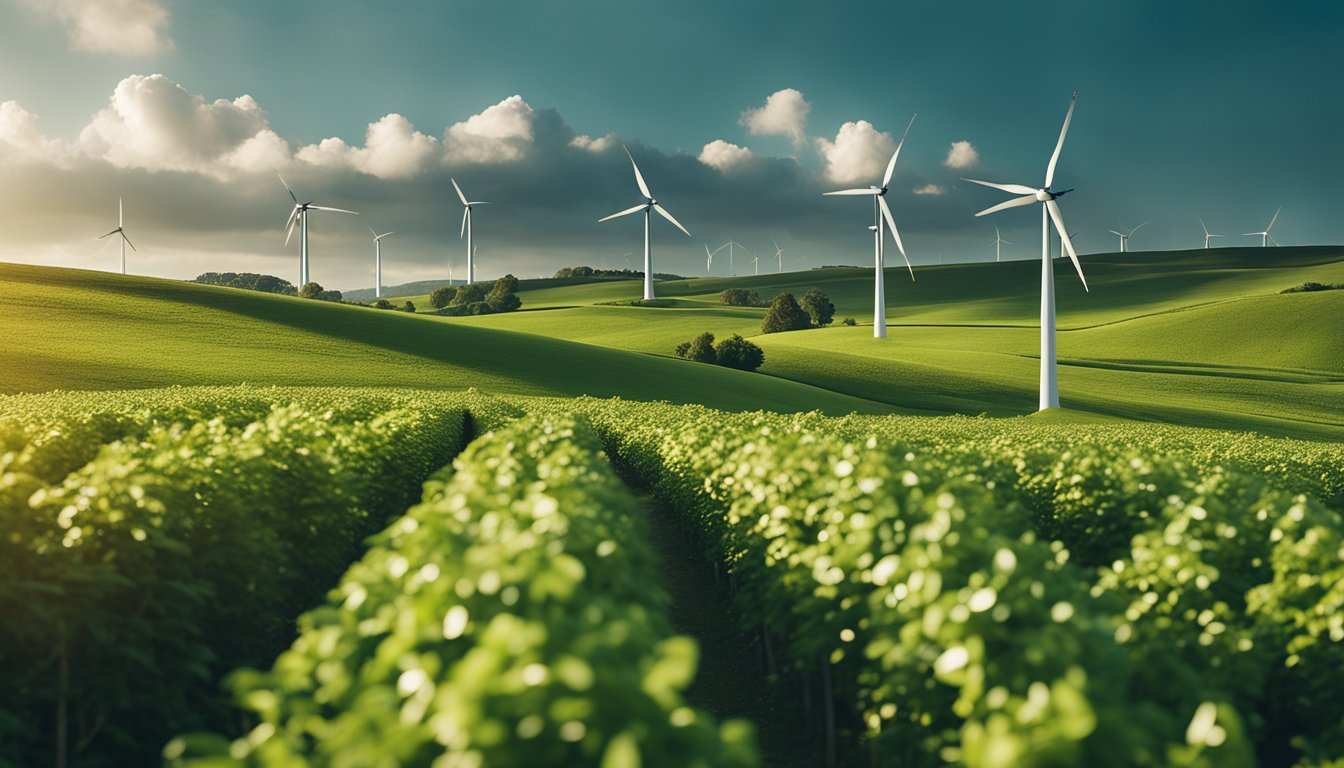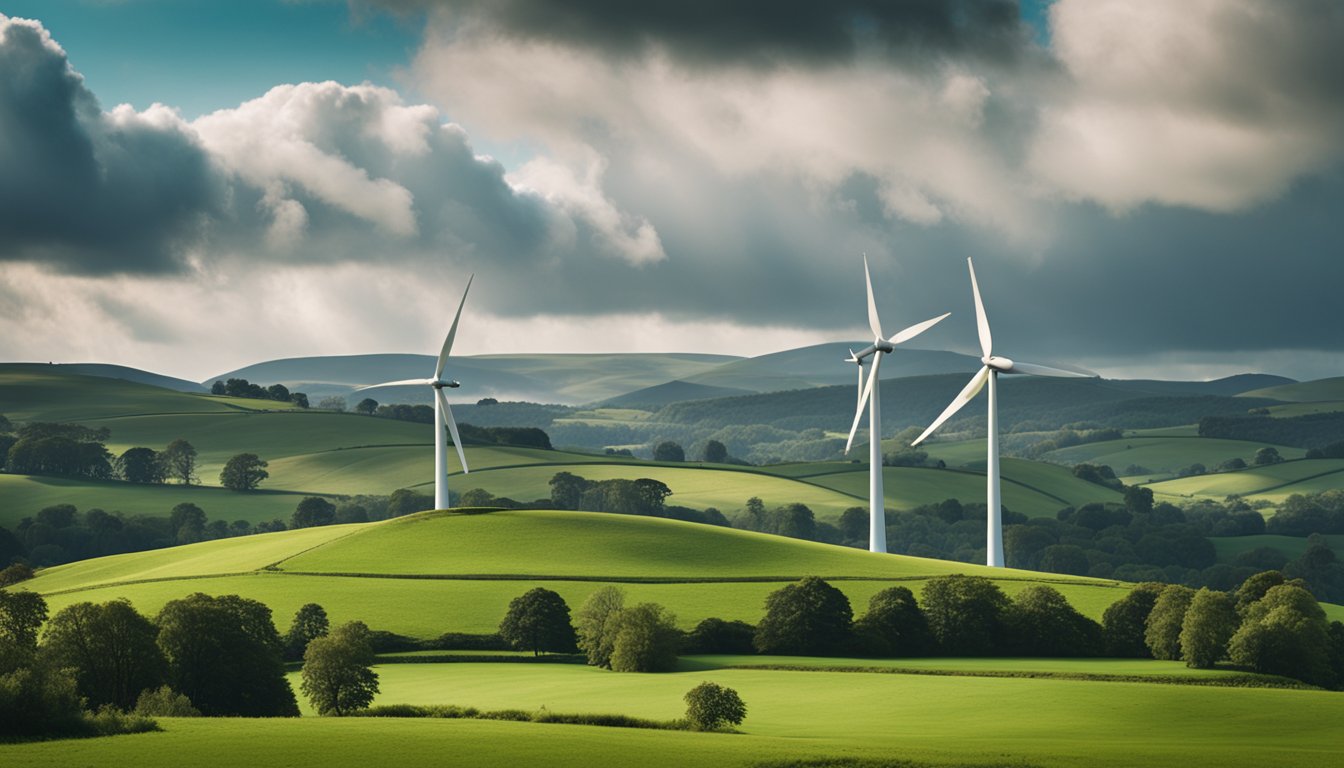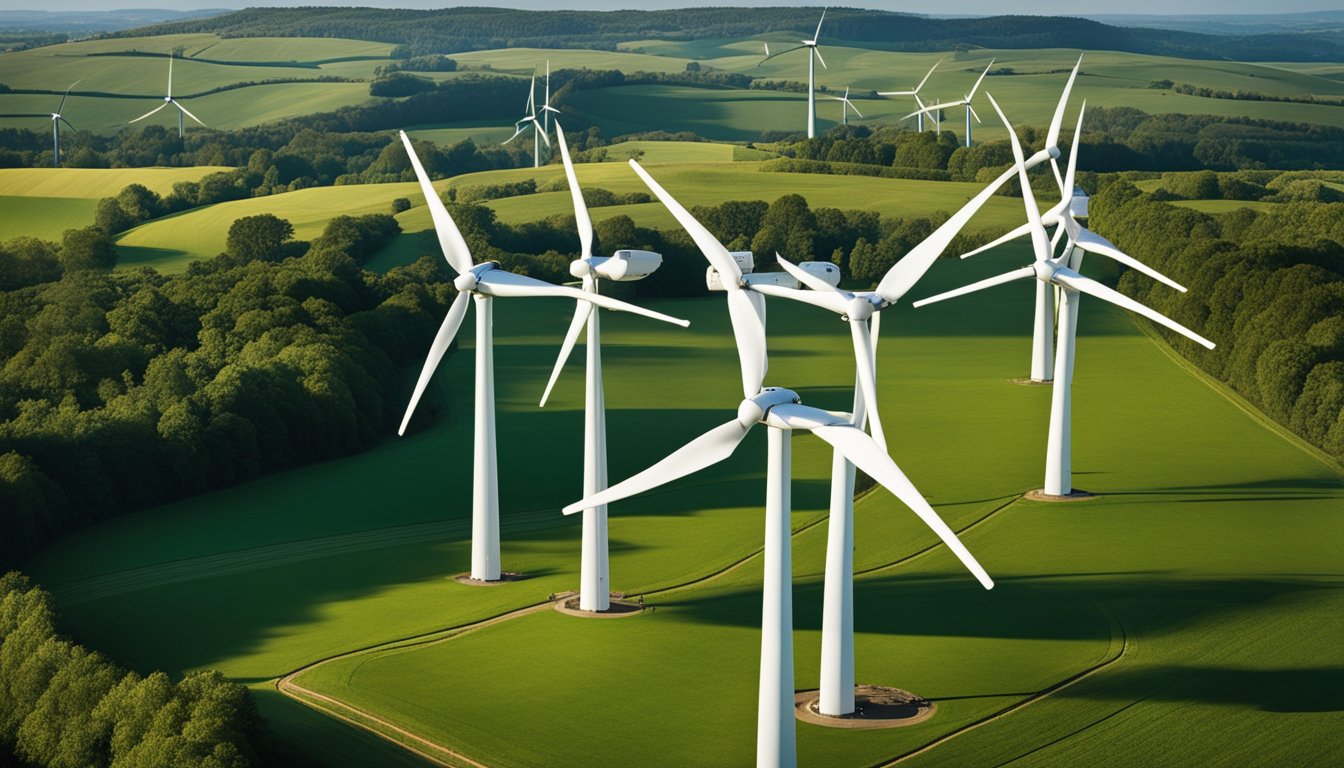Late updated: 31 Mar 2025 09:03
Written by: Eleanor Hartman
Sustainable Benefits Of Vertical Wind Turbines In The UK: Enhancing Energy Efficiency
Vertical axis wind turbines (VAWTs) are emerging as a promising solution for the UK's sustainable energy landscape. Unlike traditional wind turbines, these innovative designs offer energy efficiency while maintaining a smaller footprint. This makes them ideal for urban environments where space is limited and noise considerations are critical.

The significant advantage of VAWTs lies in their capacity to operate efficiently, even at lower wind speeds, making them well-suited for the UK's diverse climate. As a result, they play a pivotal role in the transition to renewable energy, contributing to both environmental sustainability and economic benefits. By reducing reliance on fossil fuels, VAWTs help lower carbon emissions, aligning with the UK's net zero targets.
Given these factors, exploring VAWTs in the UK context not only emphasises their importance in achieving sustainable energy goals but also highlights their potential to reshape our energy systems. We will delve into their benefits and impacts further in this article.
Key Takeaways
- VAWTs offer efficient energy solutions for urban and rural areas.
- They support the UK's sustainability and economic goals.
- VAWTs help reduce carbon emissions and reliance on fossil fuels.
Advantages of Vertical Wind Turbines in the UK Energy Landscape

Vertical axis wind turbines (VAWTs) present unique advantages within the UK's renewable energy sector. Their compact design is particularly suited for urban environments and offers complementary benefits to offshore wind farms. Additionally, they require less maintenance compared to traditional horizontal turbines, potentially extending their lifespan.
Enhanced Energy Production in Urban Environments
VAWTs are notably advantageous in urban settings where space is limited. Their vertical design allows for proximity installations on rooftops and within city landscapes, capitalising on disrupted wind patterns efficiently. This design not only maximises wind energy harnessing but also supports microgrid systems by integrating with other sources like solar PV. These hybrid systems contribute to energy efficiency, reducing the carbon footprint of densely populated areas.
Compatibility with Offshore Wind Farms
Given the UK's extensive offshore wind potential, VAWTs can serve as a valuable adjunct to traditional offshore farms. They adapt well to the variable wind conditions found at sea due to their ability to capture wind from all directions. This flexibility enhances overall energy production reliability. Combining VAWTs with conventional offshore units can bolster the energy grid, providing a stabilised renewable energy output.
Lower Maintenance and Longer Lifespan
One of the standout features of VAWTs is their lower maintenance requirement. The turbine's design reduces stress on mechanical components, minimising breakdowns and operational interruptions. This results in a longer lifespan compared to conventional wind turbines. Reduced maintenance translates to cost savings, making them an economical choice for small and large-scale energy operations. Their reliability ensures that wind farms maintain a consistent energy supply, further supporting the UK's renewable energy targets.
Environmental and Economic Impact of VAWTs
Vertical Axis Wind Turbines (VAWTs) present substantial environmental and economic benefits, aligning with sustainability goals and energy security initiatives. By enhancing energy output while minimising environmental impacts, VAWTs offer an effective solution to combating climate change and promoting a carbon-neutral future.
Contribution to Carbon Neutrality and Mitigation of Climate Change
VAWTs contribute significantly to reducing greenhouse gas emissions by converting wind energy into electricity, thus lowering reliance on fossil fuels. Their operation produces no direct carbon emissions, supporting the UK's efforts towards achieving carbon neutrality. Increased deployment of VAWTs could mitigate the effects of global warming, aligning with European Union targets to reduce carbon footprints.
In the UK, integrating VAWTs into urban and rural areas helps meet renewable energy goals. By leveraging sustainable energy sources, we push further towards a climate-friendly future. Coupled with their adaptability to varying wind conditions, VAWTs become a vital component of our energy mix, helping mitigate the adverse impacts associated with traditional energy production.
Reduction of Noise Pollution and Environmental Footprint
VAWTs are designed to operate with reduced noise levels, particularly when compared to traditional Horizontal Axis Wind Turbines (HAWTs). This characteristic makes them suitable for urban environments, reducing noise pollution and contributing to a quieter community setting.
Their compact design minimises land use and environmental disturbance. VAWTs can be installed in urban settings without significant ecological disruption, preserving local ecosystems. By having a smaller physical and environmental footprint, VAWTs align with the principles of minimising human impact on natural habitats while providing sustainable energy solutions.
Economic Advantages and Energy Security
The economic benefits of VAWTs extend to job creation and decreased energy costs. VAWTs offer a cost-effective energy generation method, particularly in offshore applications where installation and maintenance can be more manageable than traditional systems. This provides opportunities for local economies and aligns with the Department of Energy's focus on sustainable economic growth.
Enhancing energy security, VAWTs diversify our energy resources, reducing dependence on external energy supplies. This aspect of energy production promotes stability in energy pricing and ensures a resilient energy system capable of adapting to fluctuating market demands. By investing in VAWTs, we strengthen our energy infrastructure and ensure long-term sustainability.
Advancements in Aerodynamic Design and Materials
Recent advancements in aerodynamic design and materials have significantly improved the efficiency and lifespan of VAWTs. Innovations in carbon fibre and lightweight materials enhance the structural integrity and energy output of these turbines. These improvements extend their usability in various settings, making them more effective and economically viable.
The focus on optimised blade design and material technology ensures that VAWTs can harness wind energy more effectively, even in low-wind-speed areas. This adaptability plays a crucial role in widening their application scope, supporting continuous advancements in sustainable energy technology. Together, these innovations drive the economic and environmental success of VAWTs, making them an essential asset in our pursuit of a sustainable energy future.
Frequently Asked Questions

Vertical wind turbines offer unique advantages for generating renewable energy in the UK, contributing significantly to sustainability efforts. These turbines provide notable benefits that align with the UK's climate and energy ambitions. Innovations in their design have improved efficiency and cost-effectiveness, bolstering their role in the energy landscape.
What are the primary advantages of utilising vertical wind turbines for renewable energy in the UK?
The key advantages include their ability to operate efficiently in variable wind conditions, making them a reliable option in the UK. Their compact design allows installation in urban and rural settings, promoting decentralised energy production.
How do vertical axis wind turbines contribute to the UK's sustainability goals?
These turbines support the UK's sustainability objectives by generating clean, renewable energy. They reduce reliance on fossil fuels and lower greenhouse gas emissions, aligning perfectly with national climate change targets.
In what ways are vertical wind turbines more beneficial compared to horizontal axis ones in the UK's climate?
Vertical wind turbines can harness wind from any direction, increasing energy capture in the UK's frequently changing wind patterns. Their quieter operation also makes them suitable for areas where noise might be a concern.
How do offshore vertical axis wind turbines enhance the UK's wind energy capabilities?
Offshore vertical turbines take advantage of strong sea winds to generate substantial amounts of energy. Their installation offshore helps mitigate land-use concerns and integrates seamlessly into the existing offshore wind infrastructure.
What innovations in vertical wind turbine design have increased their power output and efficiency?
Recent advances include improved blade design and materials that enhance aerodynamics and durability. These improvements boost power output and overall efficiency, making these turbines increasingly competitive.
Can vertical wind turbines be considered a cost-effective renewable energy solution for UK residents?
Yes, vertical wind turbines are becoming more cost-effective as technology advances. Reduced maintenance needs and extended operational lifespans contribute to long-term savings, making them an attractive option for both residential and commercial use.